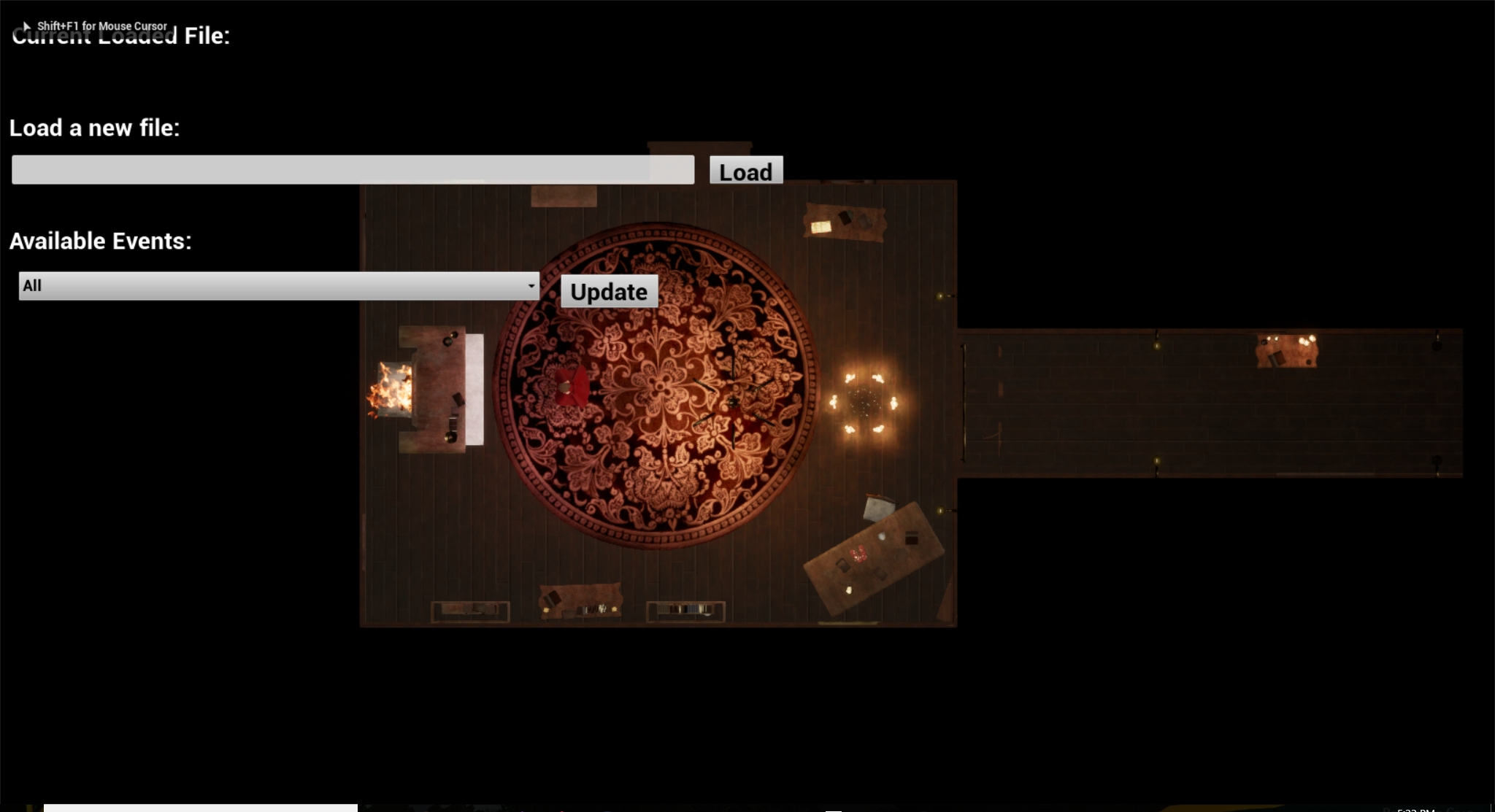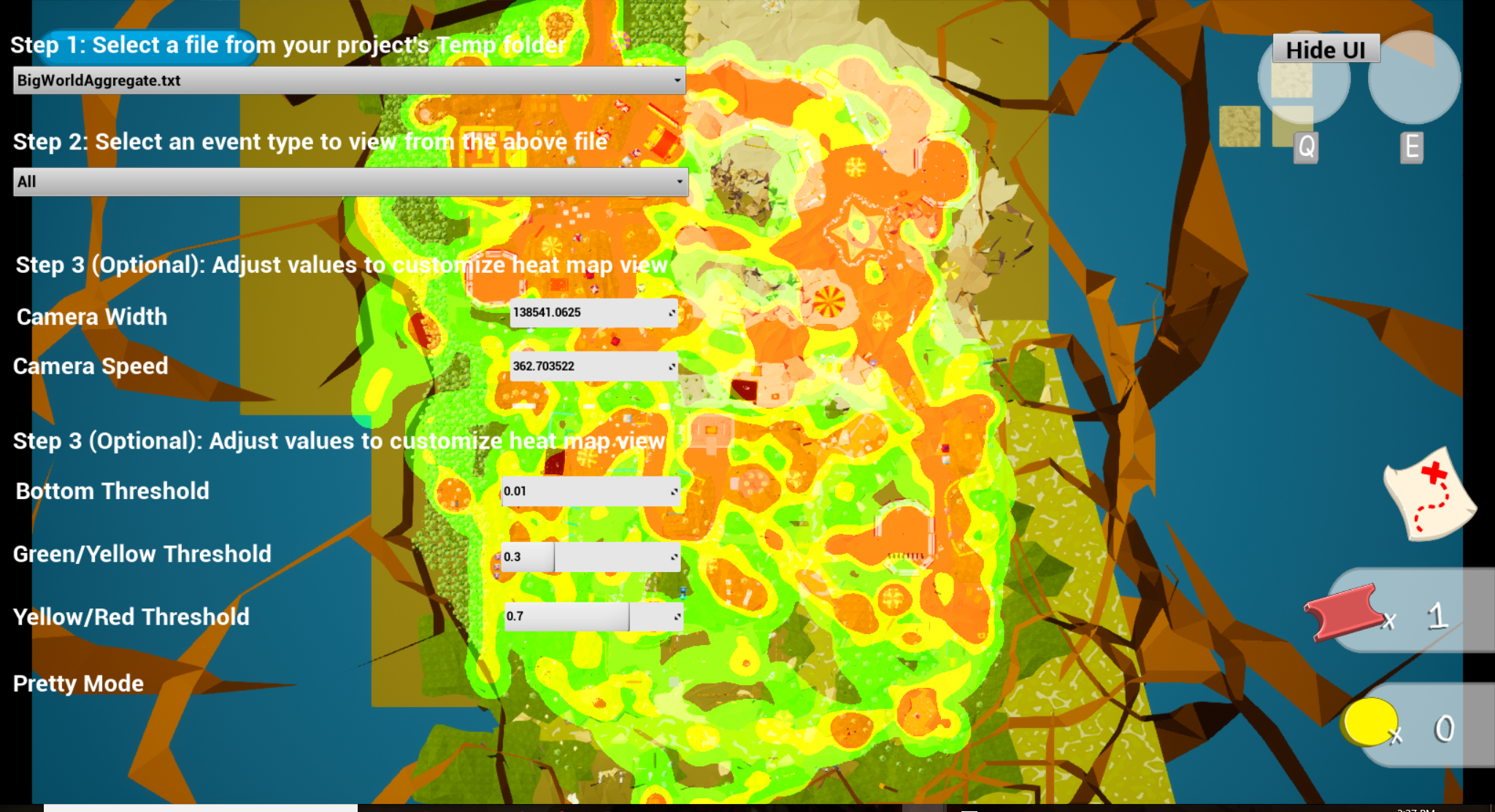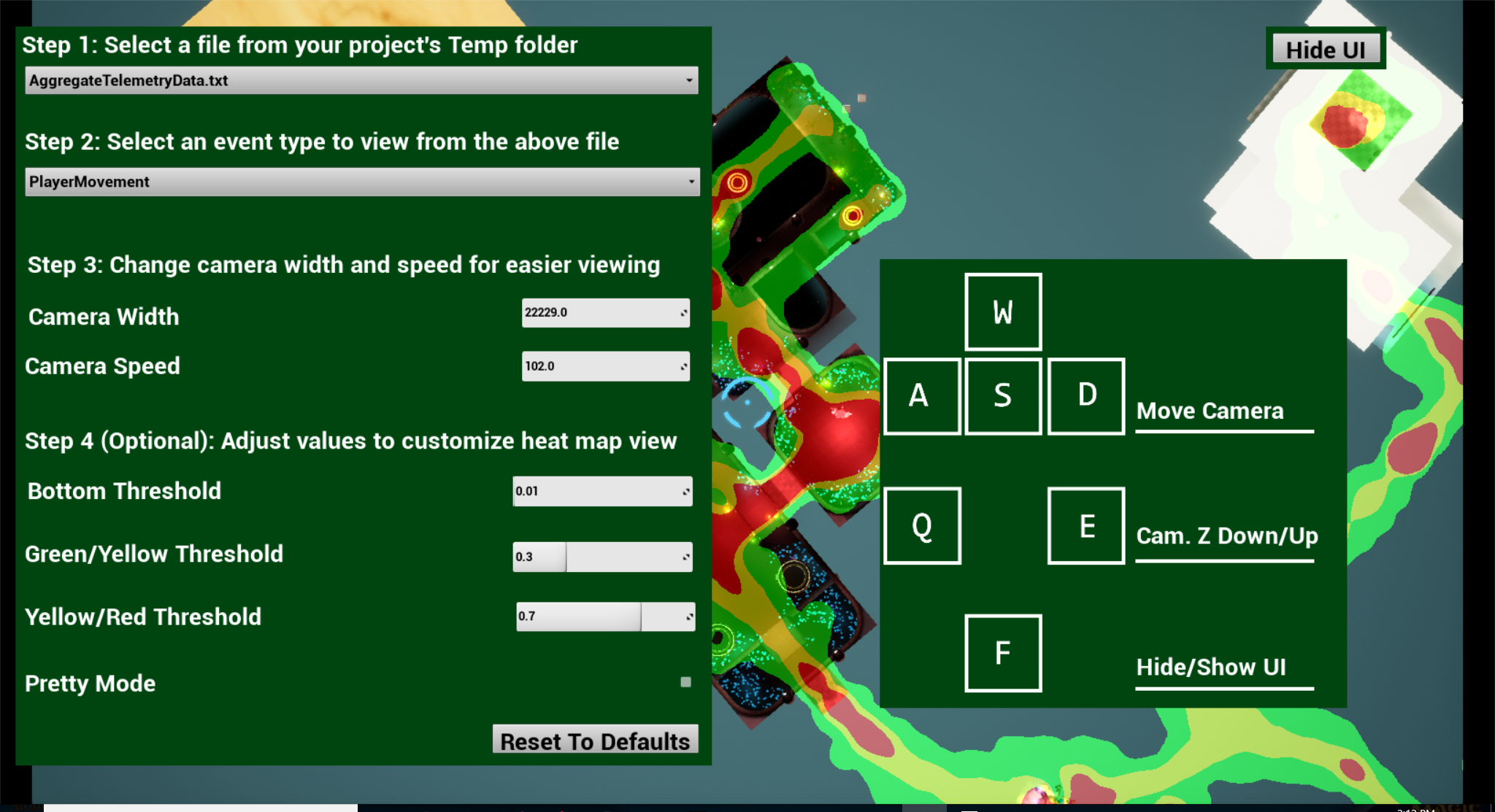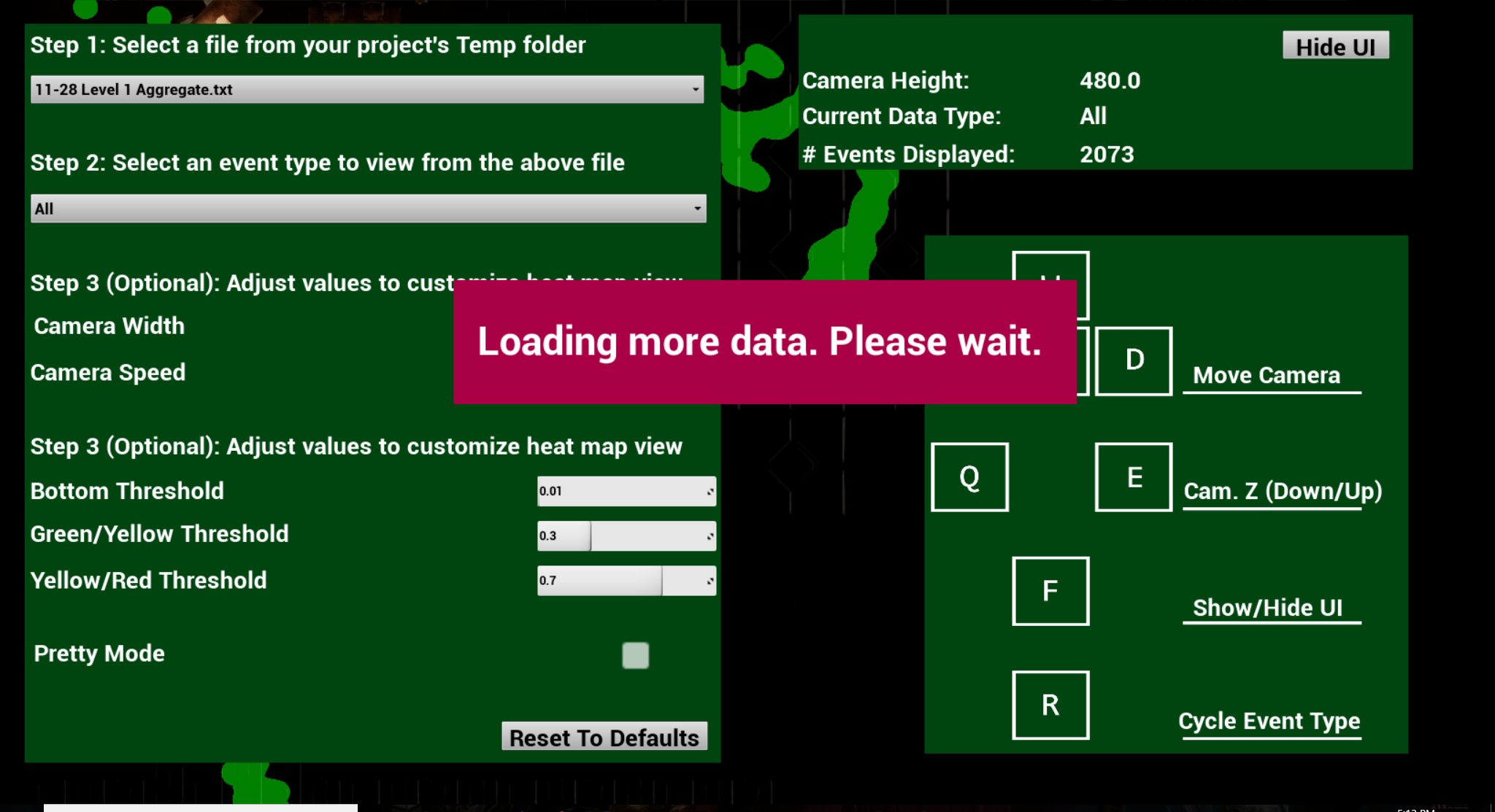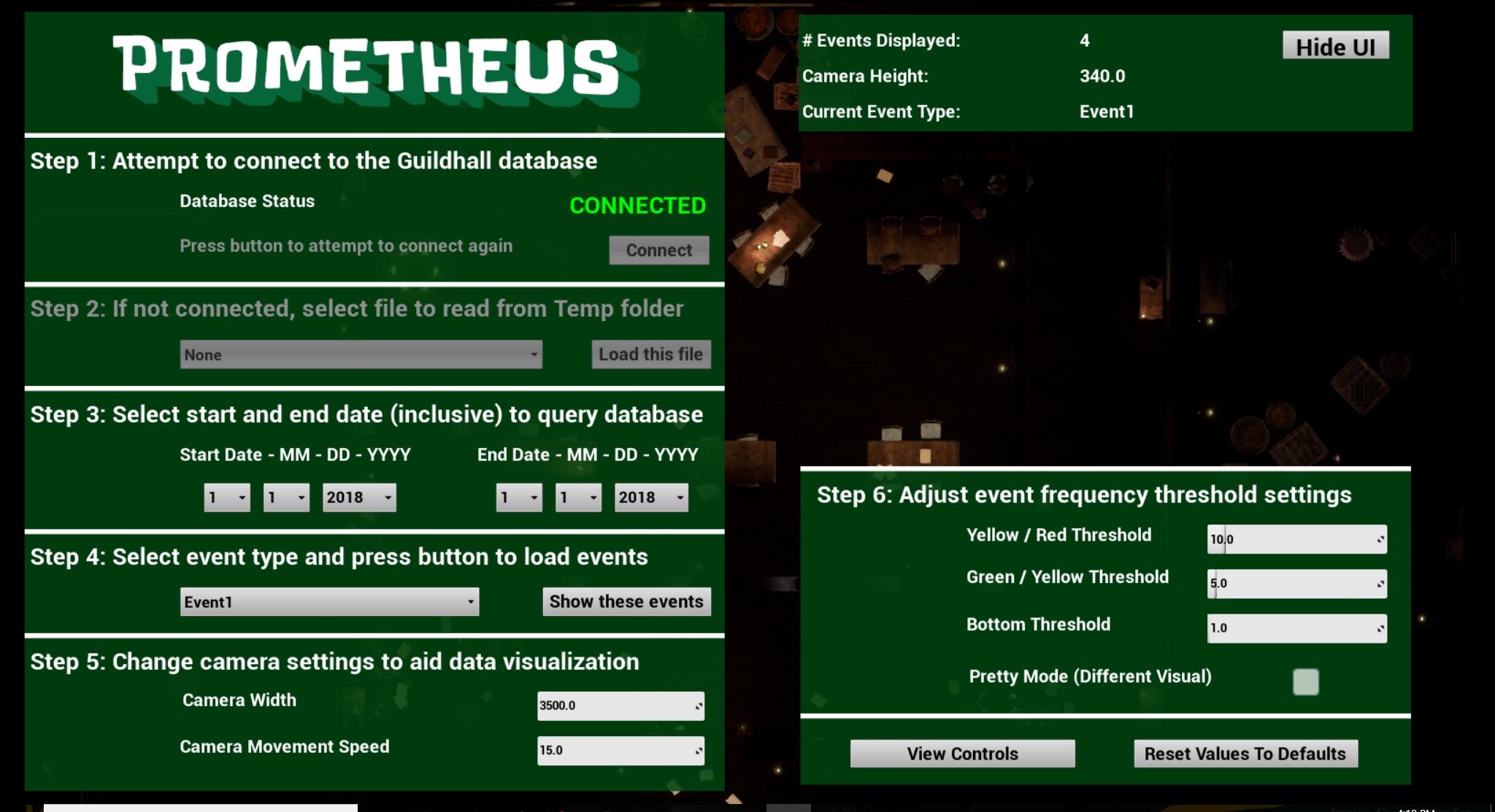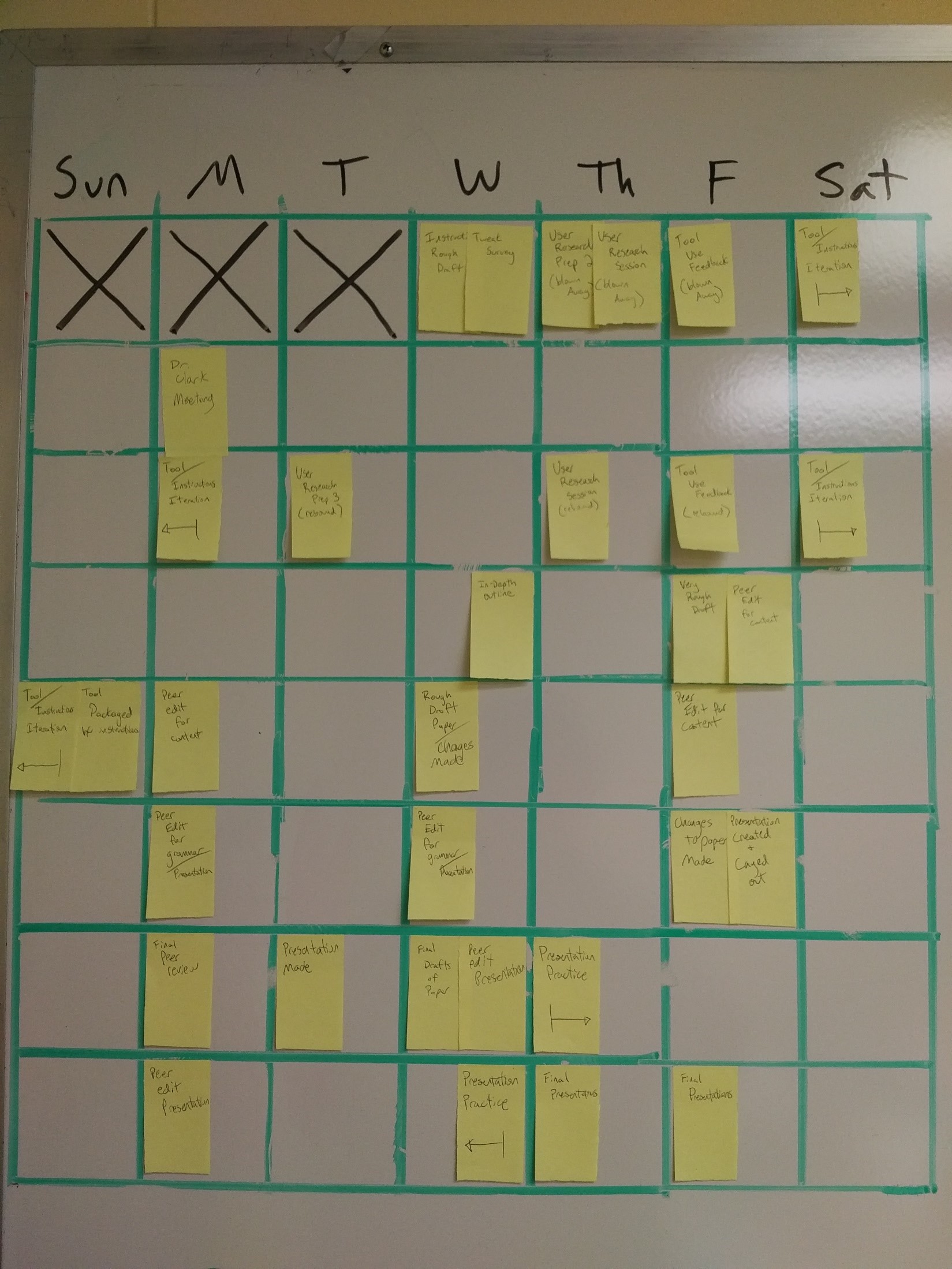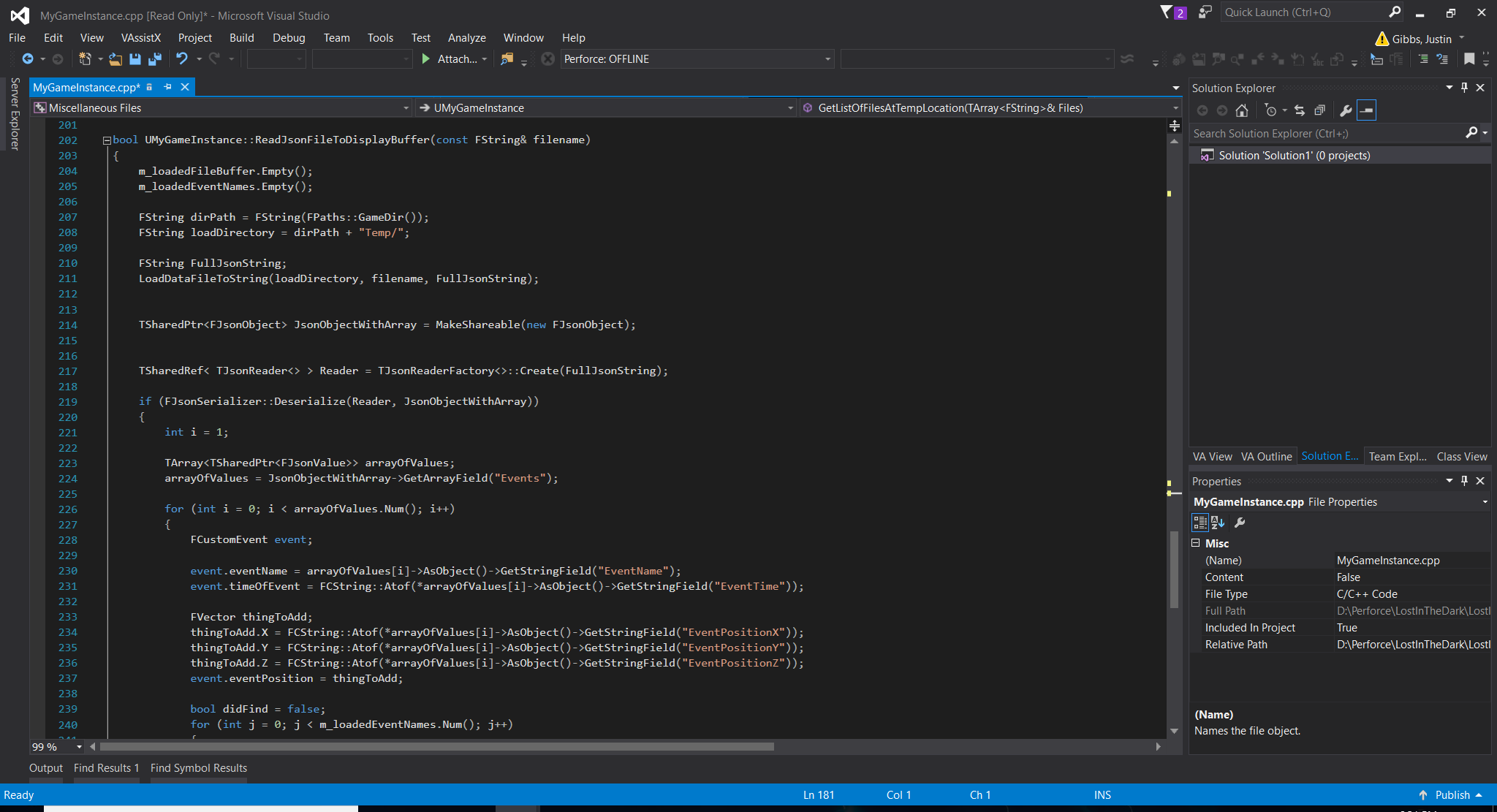Thesis: GUR Tool Development
Platform: PC · Engine: Unreal · Team Size: 1 · Timetable: 6 months
As a producer, I identified the need for my capstone team to have analytics tools. After some research I found that there were no heat map tools available for independent or student developers. For my thesis, I decided to do research into the field of Games User Research (GUR), specifically for tool development, and generate a list of best practices. With this list of best practices I designed and created a data collection / heat map tool for the Unreal Engine. The tool was integrated into three different student projects at SMU Guildhall. I held user tests to collect data, and received feedback from developers using the tool.
My biggest learn from this project is directly related to one of the best practices I identified. The sixth best practice was that all data collected should be targeted and actionable. The idea behind this axiom is that collecting all kinds of data throughout the whole process can become very cumbersome. Developing a research question or hypothesis early lets you understand the data collection and analysis processes better and make decisions faster, because you're expecting results to either confirm or deny the hypothesis.
Contributions
Role: Researcher, Programmer
Researched best practices for tool development in GUR
Identified list of best practices
Used best practices for initial tool design
Facilitated integration into three games
Received feedback from developers and iterated tool
Evaluated best practices list
Programmed using C++ and Blueprints for Unreal
Documented tool
Wrote research paper outlining development process
Presented findings at several milestones
Defended thesis to a panel of faculty and peers
Images
